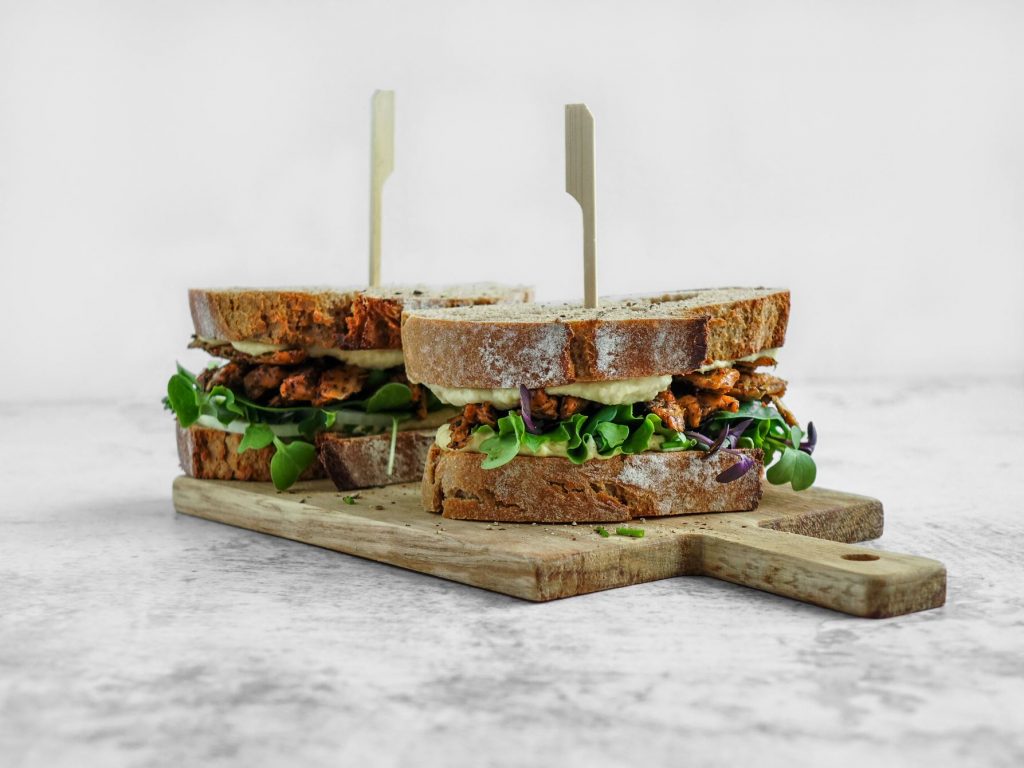
A tavola! Club sandwich with chive hummus. Just one of many meals derived from peas and their protein./ Photo: Planted
People have been using peas for thousands of years, and rightly so, as they are full of protein. Thanks to modern food technology, these very proteins make it possible to enjoy meat in a sustainable way.
A tasting by Dorian Schiffer
When Gregor Mendel founded the theory of heredity with the pea plants from his Brno monastery garden, mankind had already been cultivating the little green balls for thousands of years – because the pea is not only an object of study for genetics, but also one of the oldest staple foods. Originally from Asia Minor, the pea has been with us for 10,000 years. And there is a reason for this: the seeds of the pea plants are a rich source of nutrients and can be easily stored when dried.
In order to pack their seeds full of proteins that are important for humans, pea plants rely on teamwork. The plants form a partnership with bacteria in the thickenings of their roots. These microbes pull nitrogen from the air for the plant, the most important chemical building block of valuable proteins. As a result, peas can generally thrive without additional nitrogen fertilizer – making their cultivation particularly scho-netic for the soil.
What we know today as peas, i.e. the green, soft seeds, only came into fashion in modern times: Before that, the ripe, dry pea seeds were used and mainly consumed as soup or mush. The unripe green seeds or sugar snap peas, which are eaten with the pod, were only able to assert themselves against dried peas with the help of modern preservation methods. The ripe pea seeds in particular would be true nutrient bombs, rich in fiber, carbohydrates and minerals. But no gourmet would rub his hands together if he were presented with a plate of pea porridge. The gourmets among us would probably be more pleased with a crispy schnitzel or, if you like Asian food, a delicious bami goreng or Indian butter chicken. However, as good as these dishes may taste, they cannot do without meat, which is a problem not only for animal welfare
Animals have to die for meat. This fact alone may be reason enough to avoid meat products. But beyond that, meat is not a particularly efficient source of protein: in order to produce beef, for example, cows have to be kept for years on huge pastures and supplied with energy-rich concentrated feed, for example from soy, for which further cultivation areas are needed. This land consumption is only trumped by the water consumption that makes the fodder plants grow and waters the cattle. If forests are cleared for the fields and pastures, the climate balance is worse.
The same amount of protein from plant sources requires only a fraction of these resources. So for the environment, a predominantly plant-based diet is preferable. But what if you can’t do without the taste of meat? In this case, our old companion comes into play again: the pea, or more precisely, its protein. This substance can be used to produce amazingly real-looking – and tasting – substitute meat. However, this requires state-of-the-art food technology.
The company Planted, for example, uses a mixture of pea flour, sunflower seed flour and oat flour for its products. To transform this powder into meat substitute, it needs a special device, the extruder: Under constant kneading, the protein flour is mixed with rapeseed oil and water and heated step by step. This produces a long-fibered protein mass, which is then cut and marinated with oils, spices and herbs – or breaded in the case of the vegetable cutlets.
The meatless meat produced in this way releases a good three-quarters less CO2 than chicken, according to Planted. So the meat substitute is environmentally friendly and it can be prepared just like animal meat: Planted’s plant-based chicken can be combined with onions, garlic, ginger, coconut milk and Indian spices to create a creamy Butter Chicken. The company’s fibrous Pulled “Pork” makes a great sandwich between two slices of toast with a bit of arugula and hummus. Now, guests at the Science Ball can find out exactly what Planted’s product line tastes like at the tasting booth. Bon appétit, thanks to the pea!
Dorian Schiffer studies physics at the University of Vienna and writes about science, for example in Der Standard and alexandria magazine.